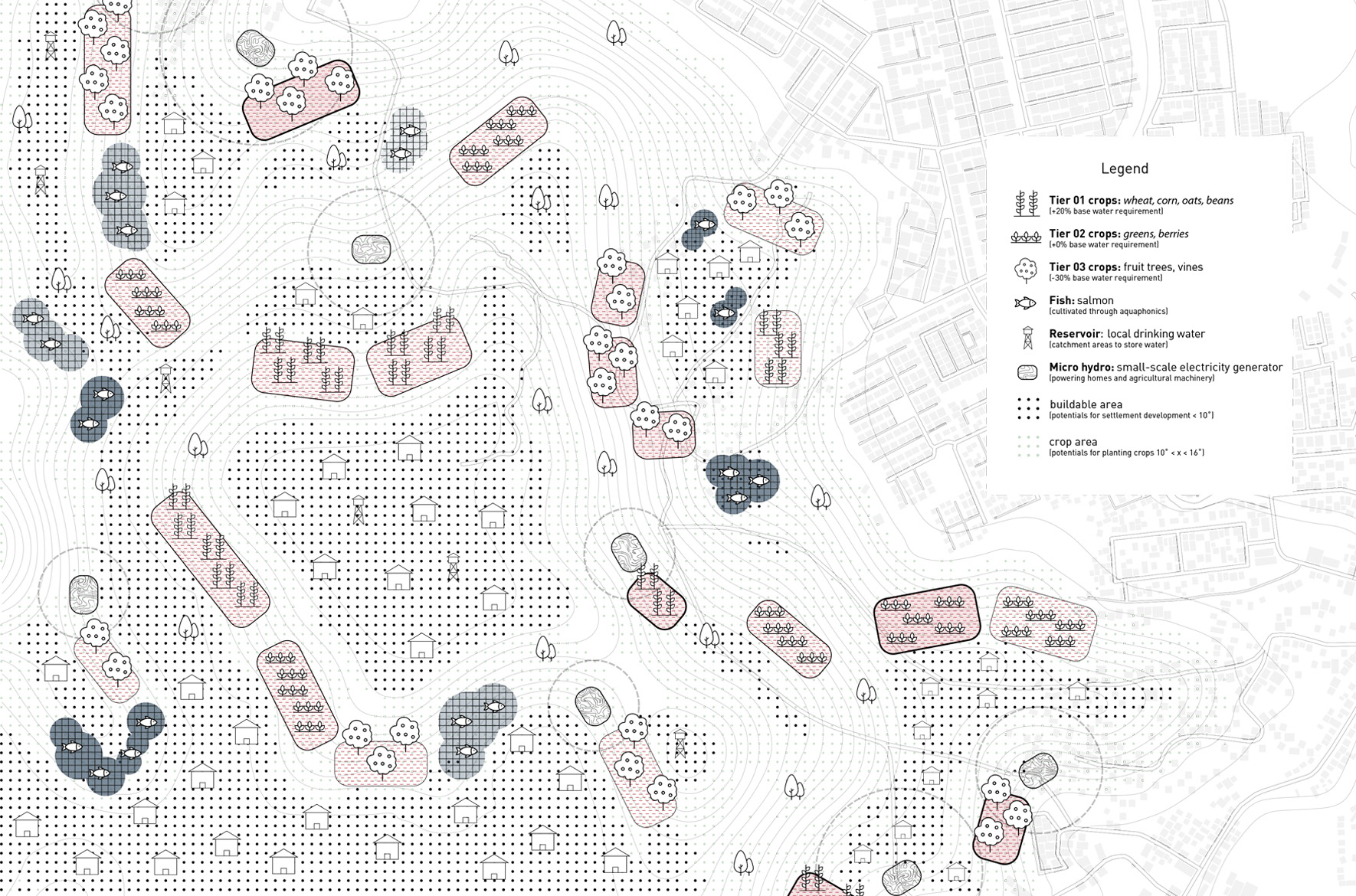
Performative Landscapes is a speculative design proposal that employs computational methodologies and tools to mitigate flood risk in the city of Concepción, Chile and allow for safer urban expansion in the region.
YEAR: 2018
FILED UNDER: ACADEMIC, AALTO UNIVERSITY
CO-AUTHORS: TINA CERPNJAK, YE FENG
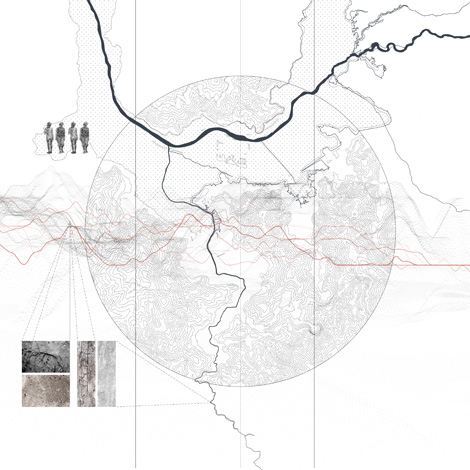
Concepción is a dense urban pocket surrounded by mountainous terrain that is prone to landslides, limiting the potential to expand outwards from the city core. Therefore, we aimed to develop an urban strategy that could not only calculate the at-risk areas, but also control and make productive use of the water flow for the local community.
To understand and predict how water travels down a landscape, we developed a script (in Python) that takes into account the exact site parameters that influence its behavior, such as topography, soil granularity, and vegetation.

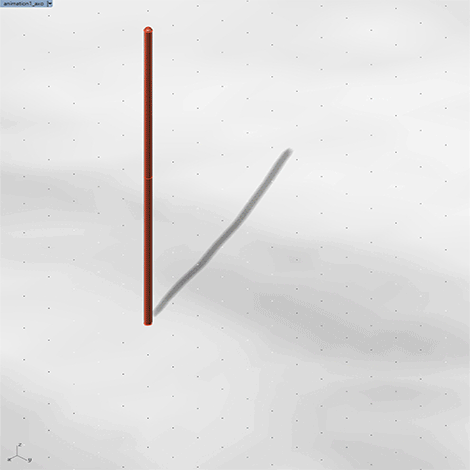
The responsive model distributes a column of water down a slope until all cells are stable. In the visualization, the red cells are unstable (and will continue water distribution to neighboring cells) whereas the yellow and blue represent critical capacity and under capacity respectively and will both stop water distribution to neighboring cells.
By simulating this, we were able to determine potential areas for productive intervention along the mountainside where we could introduce agriculture, fishponds, water reservoirs, and micro hydro systems. These solutions control the water flow, allowing us to design a masterplan with safe pockets for urban development.
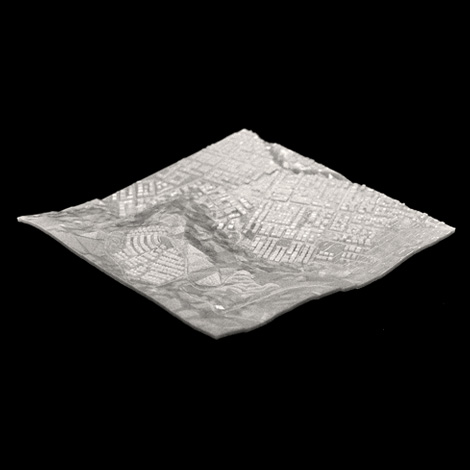
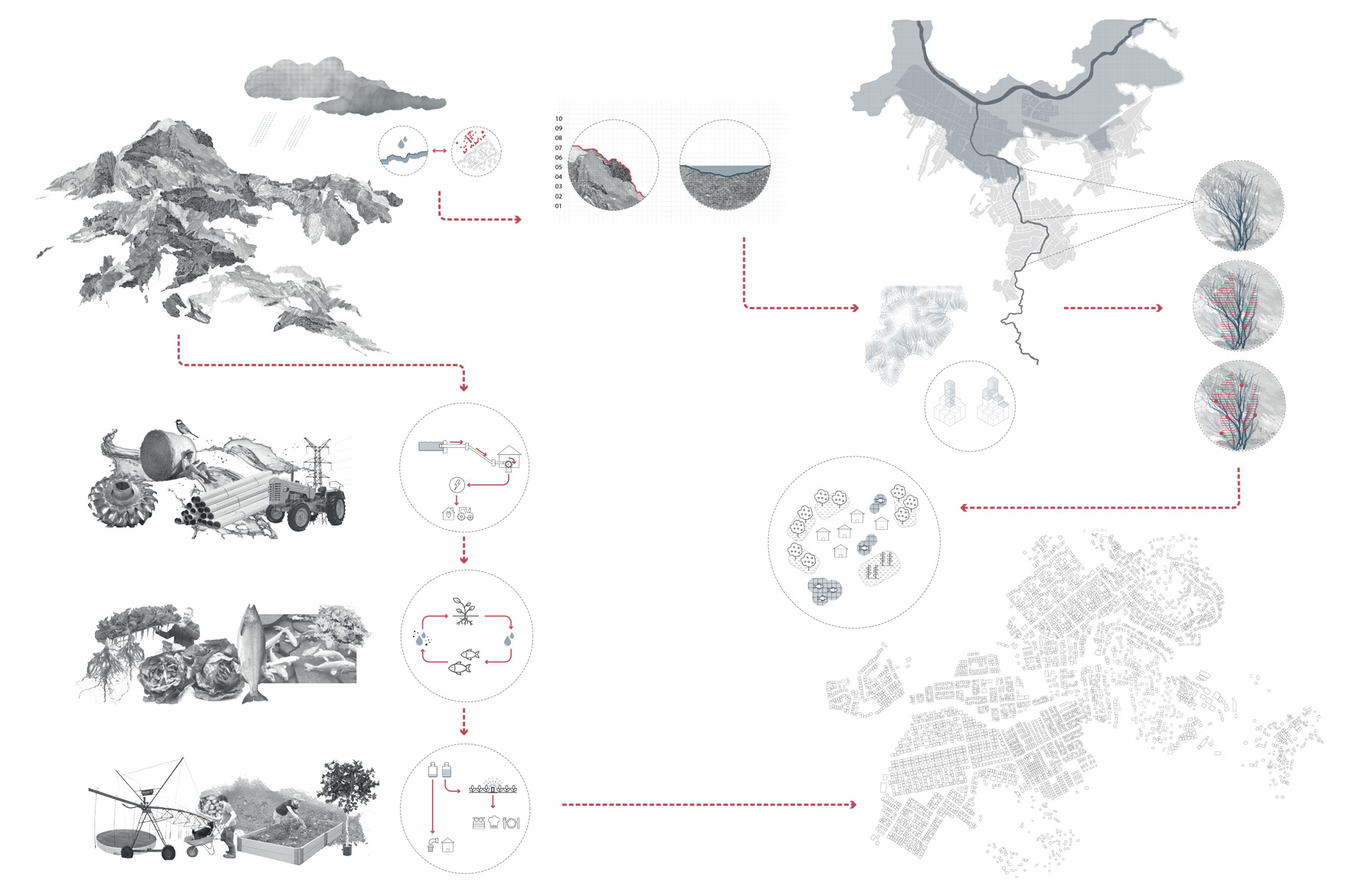
The above diagram is our system concept, which served as the overarching framework for our design process. With the mindset of landscape as a verb, we studied how the three core actors (mountain, river, and urban fabric) all interact with one another to guide us in deciding where and how to productively intervene.
The detail to the right shows how the fishponds were formally derived with their holding capacities directly corresponding to the maximum rainfall during the local rainy season. Their orientation follows the behavior and logic of the water flow.
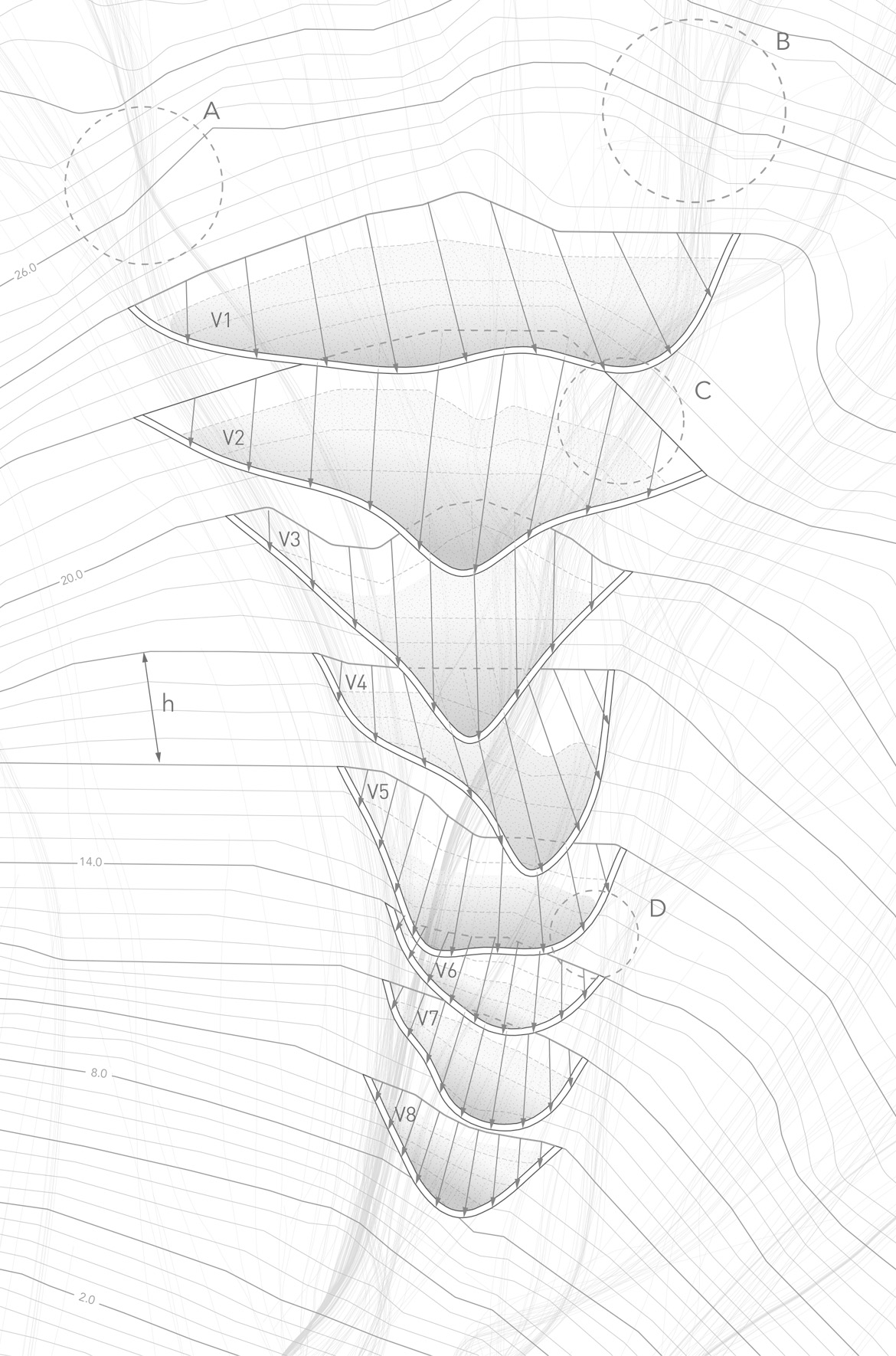
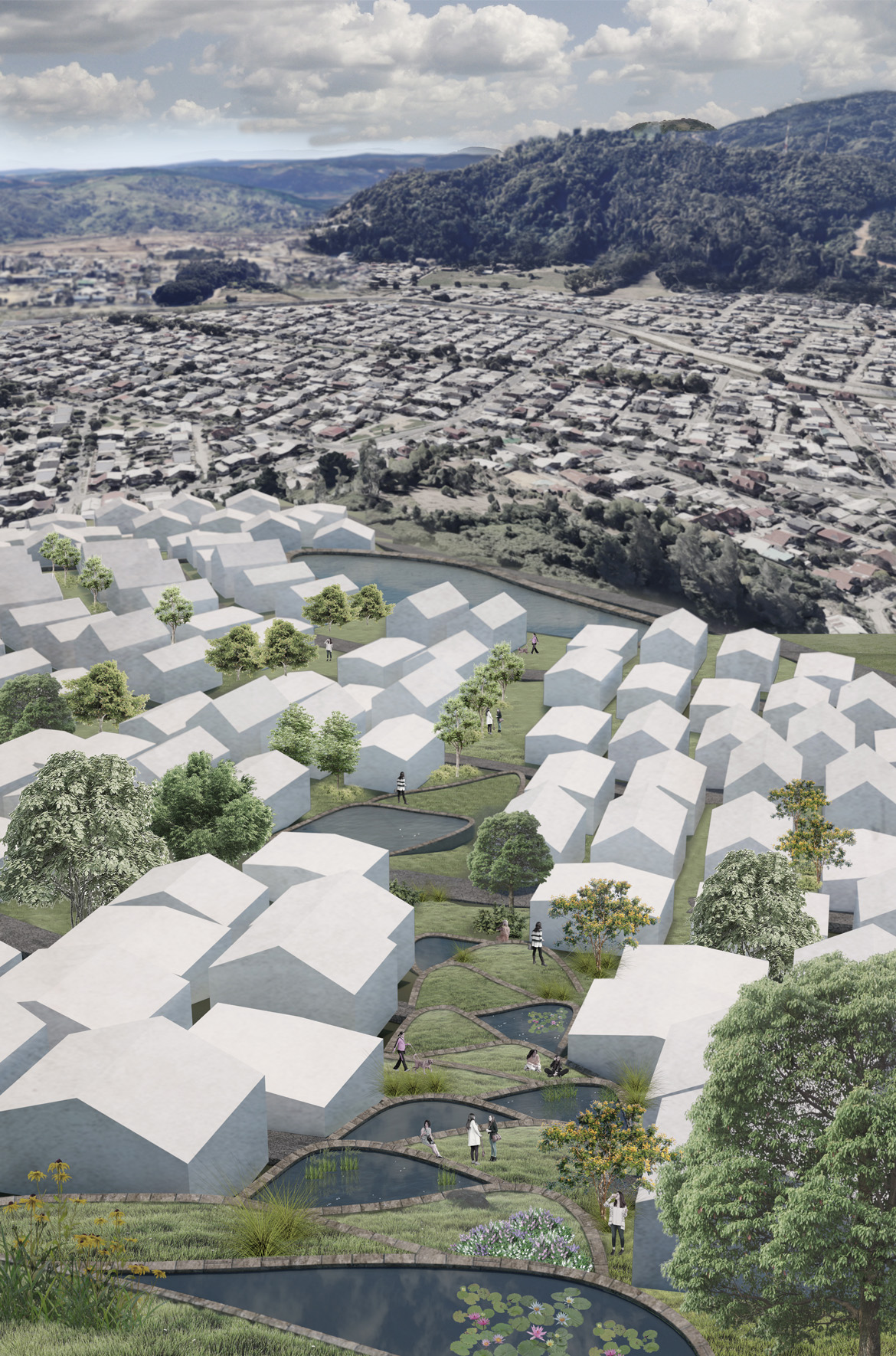

The above diagram is our system concept, which served as the overarching framework for our design process. With the mindset of landscape as a verb, we studied how the three core actors (mountain, river, and urban fabric) all interact with one another to guide us in deciding where and how to productively intervene.
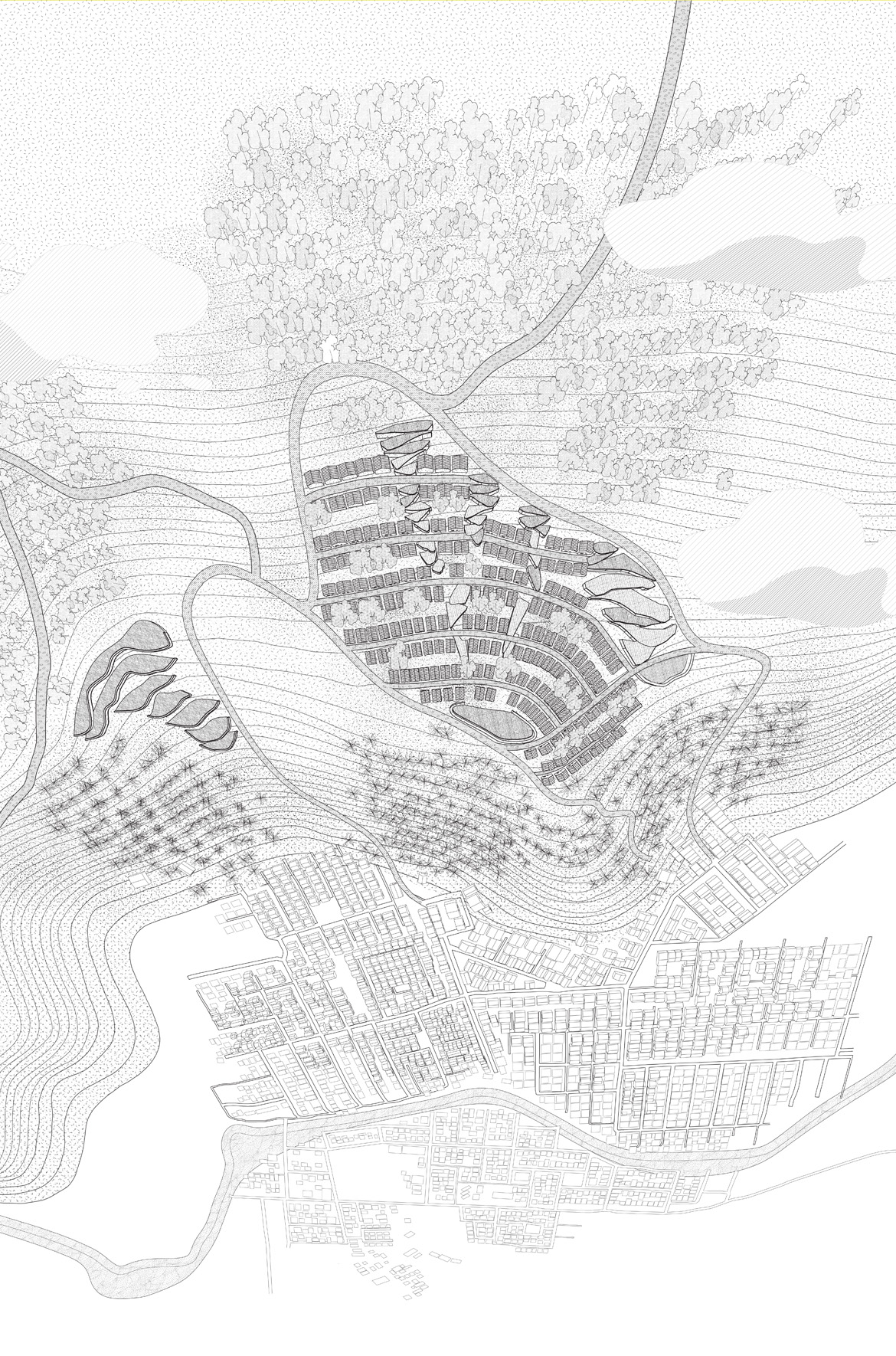
In tandem with the various interventions, the axonometric to the left and rendering to the bottom visualize the upward urban expansion for the community, a proposal that was previously impossible due to the risk of landslides.
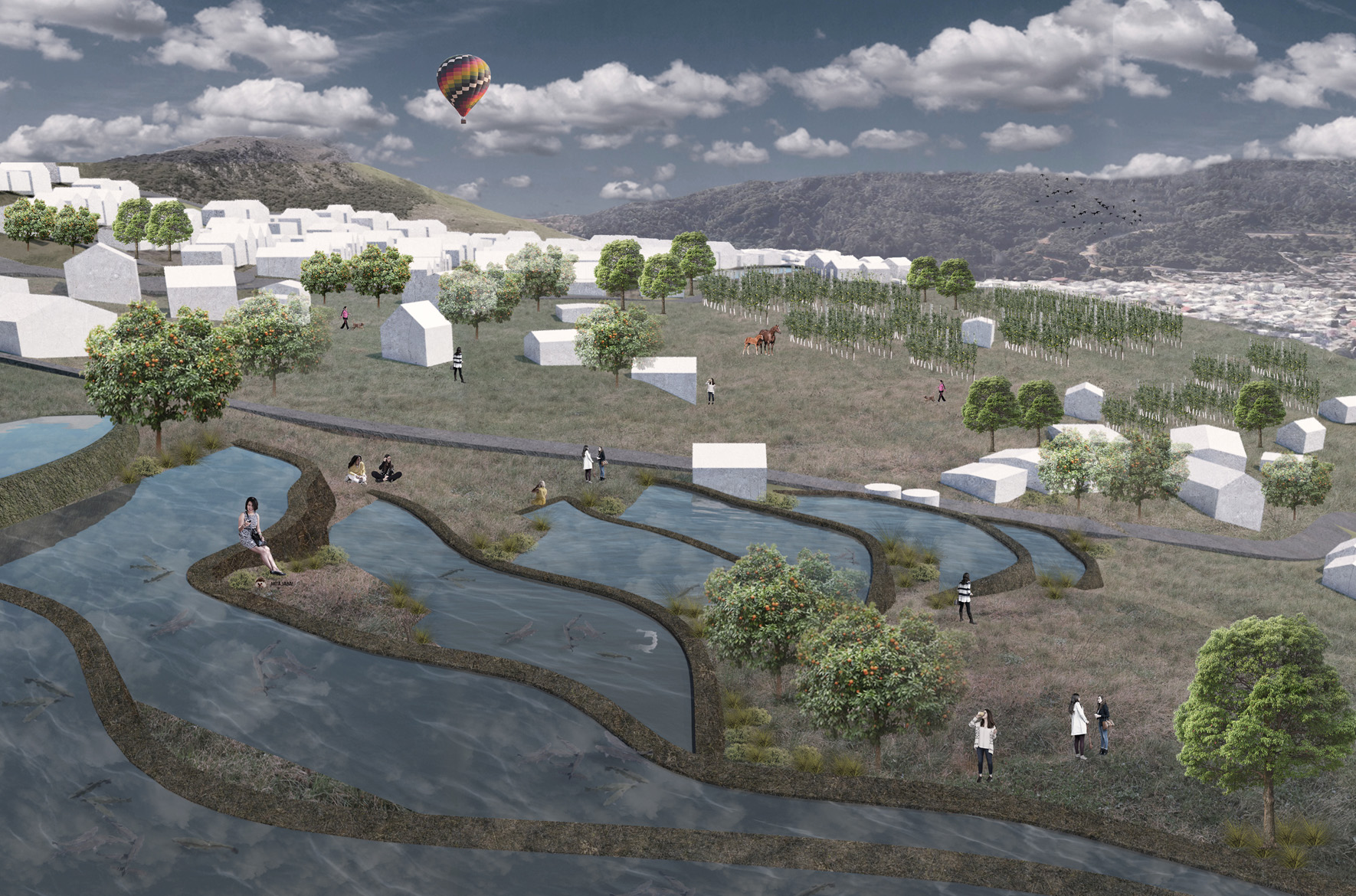
see more

performative landscapesa speculative design proposal that employs computational methodologies and tools to mitigate flood risk and allow for safer urban expansion
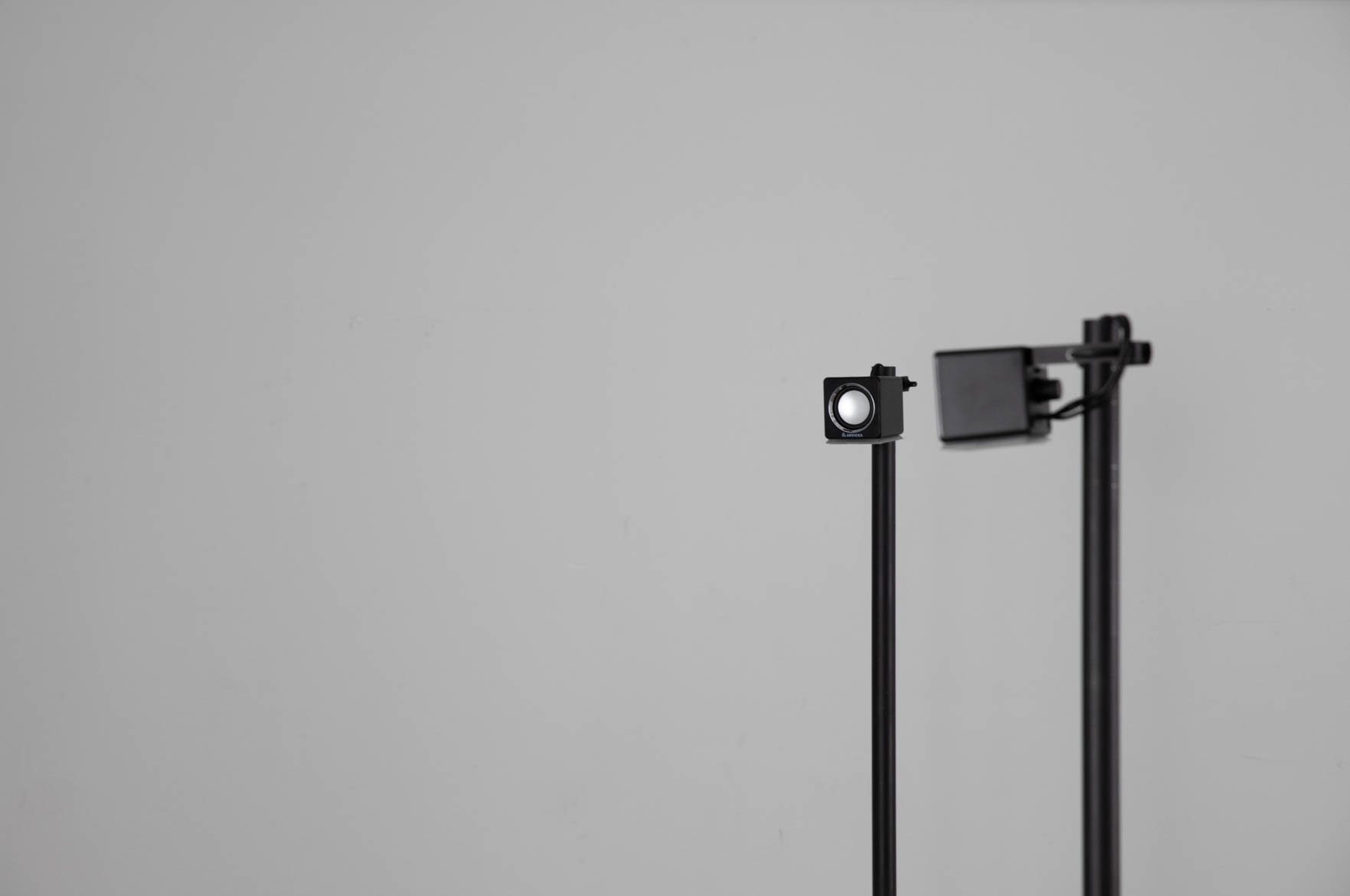
blind as a batan experiential sound installation that uses visitors as agents in an ever-changing dynamic soundscape, challenging our understanding of aural architecture
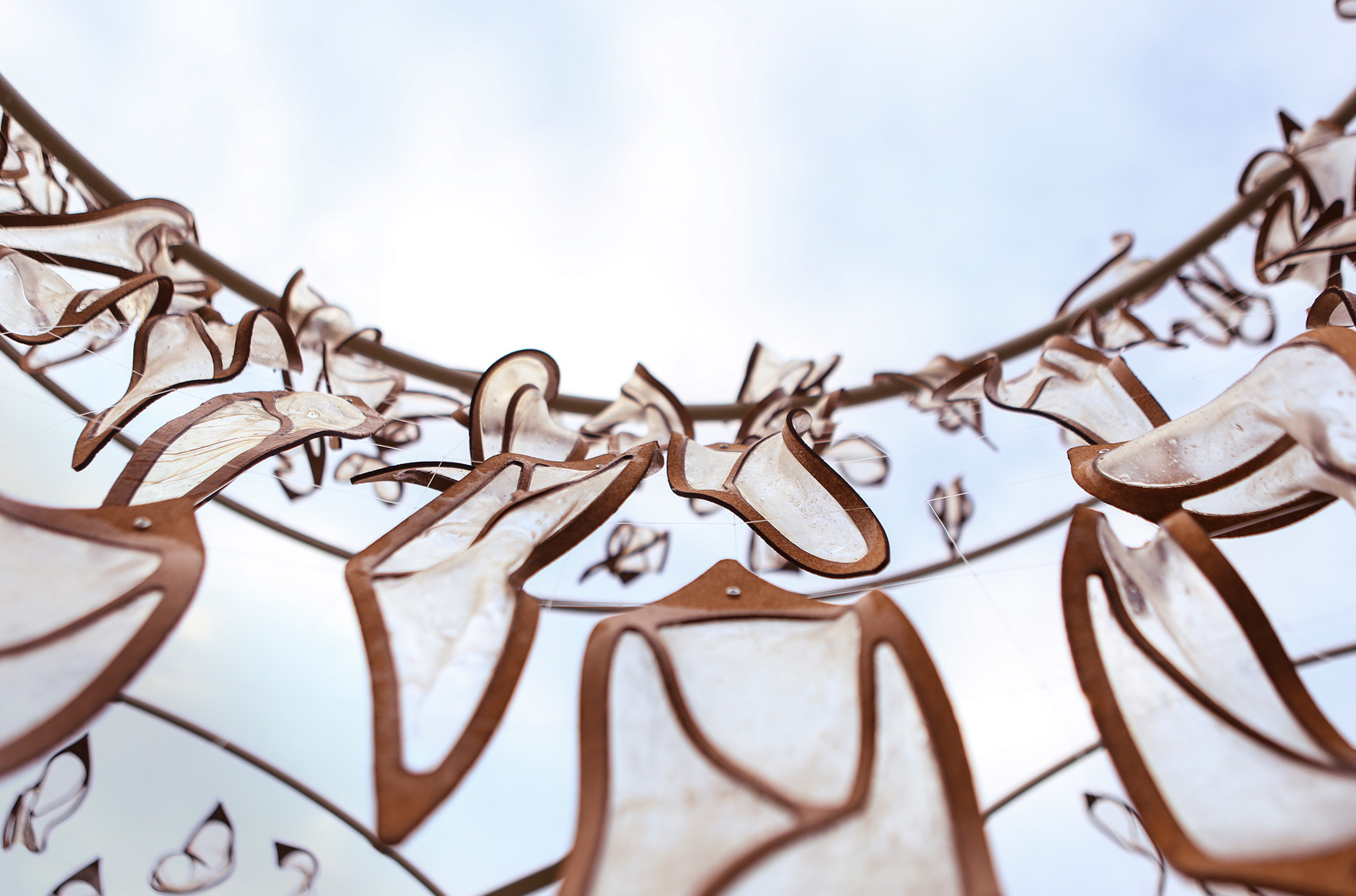
bio.modulesa two-part series of outdoor installations that employ biomaterials as a way to envision the future interactions architecture could have with the environment
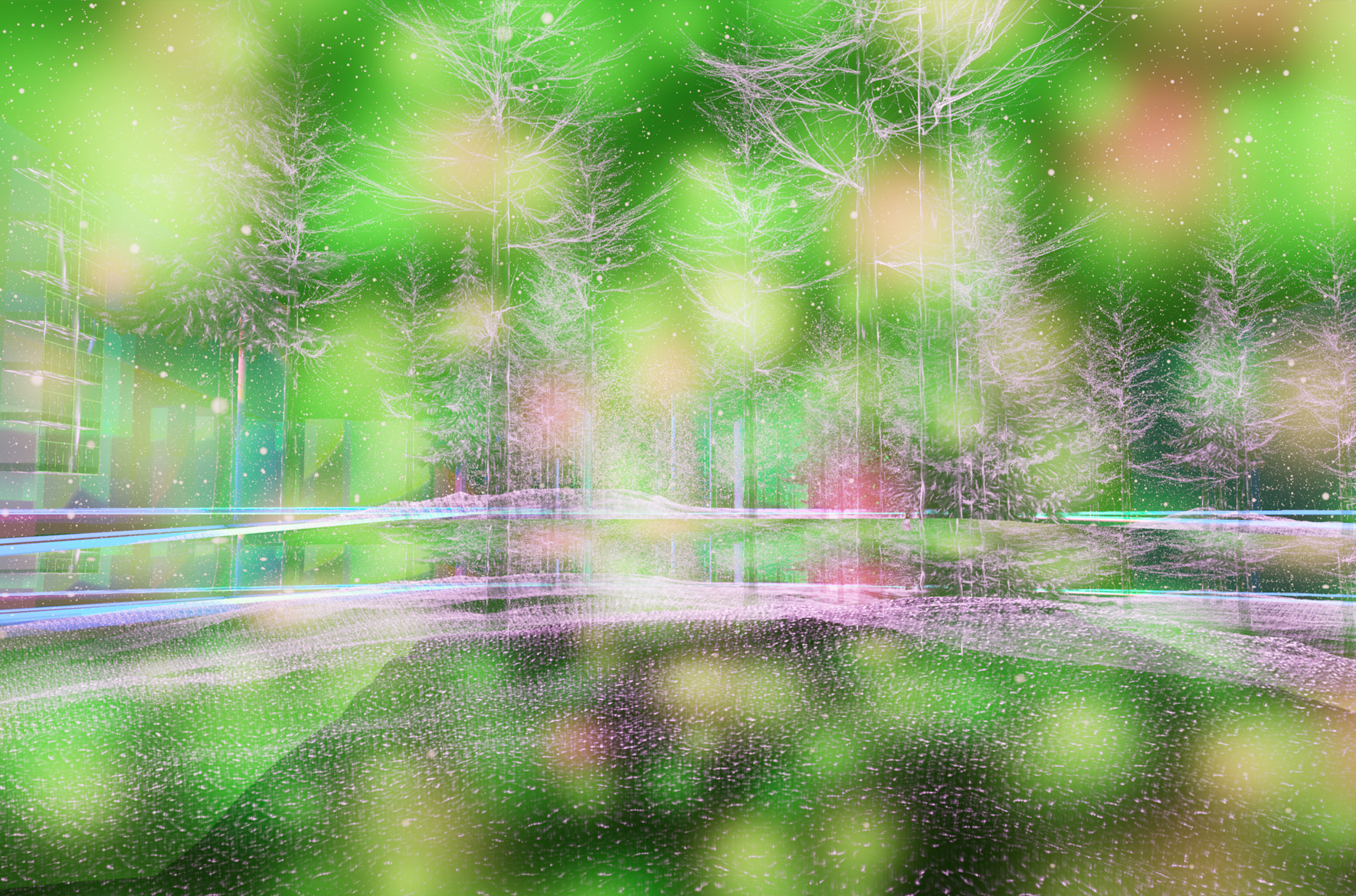
a walk in the woodsan immersive virtual reality experience that explores the relationship between the visual and the auditory through the creation of diverse, dynamic soundscapes
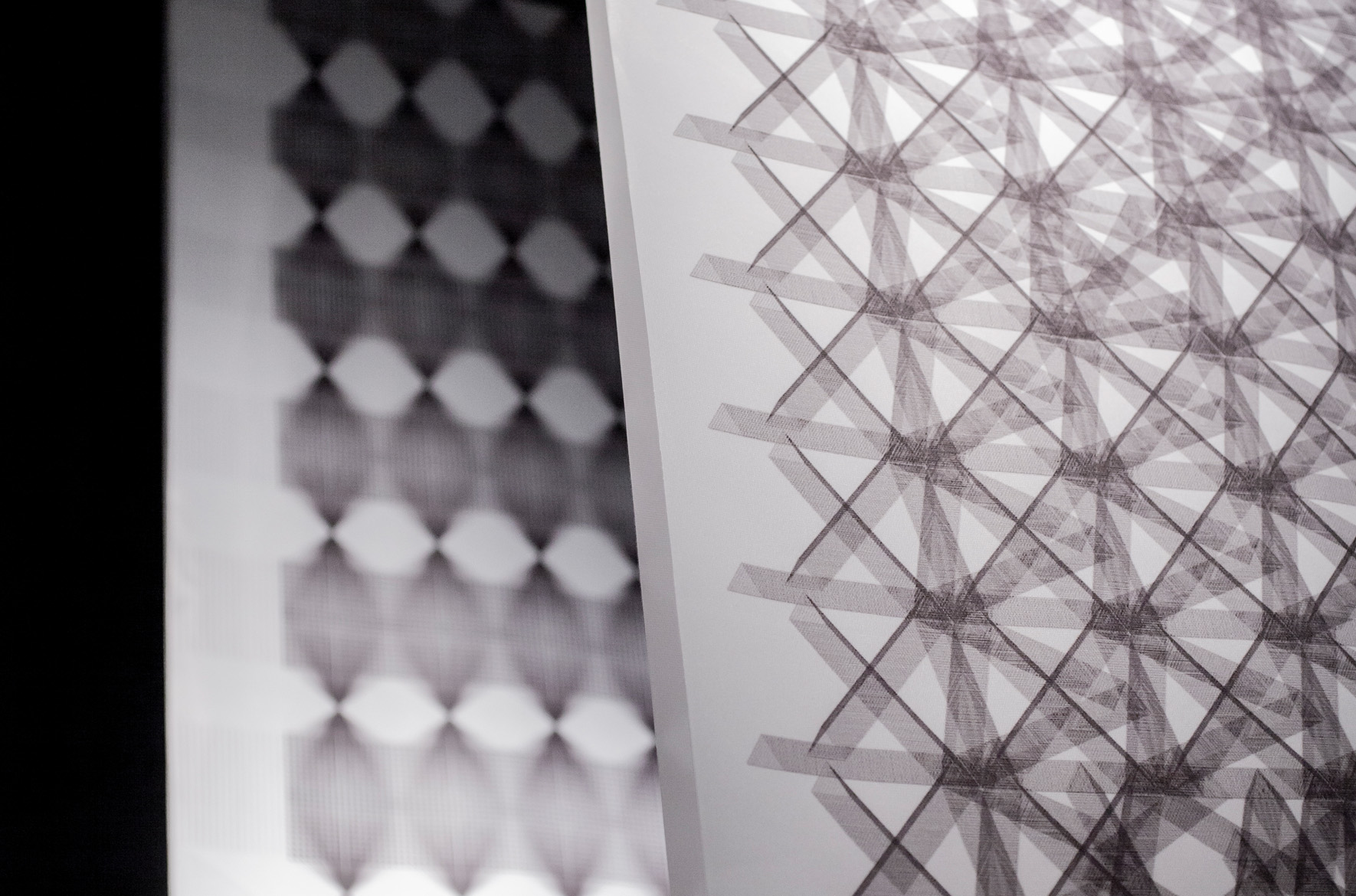
parametric translationsa 15m generative textile pattern that translates the potential in algorithm-aided design methods into something visually tangible
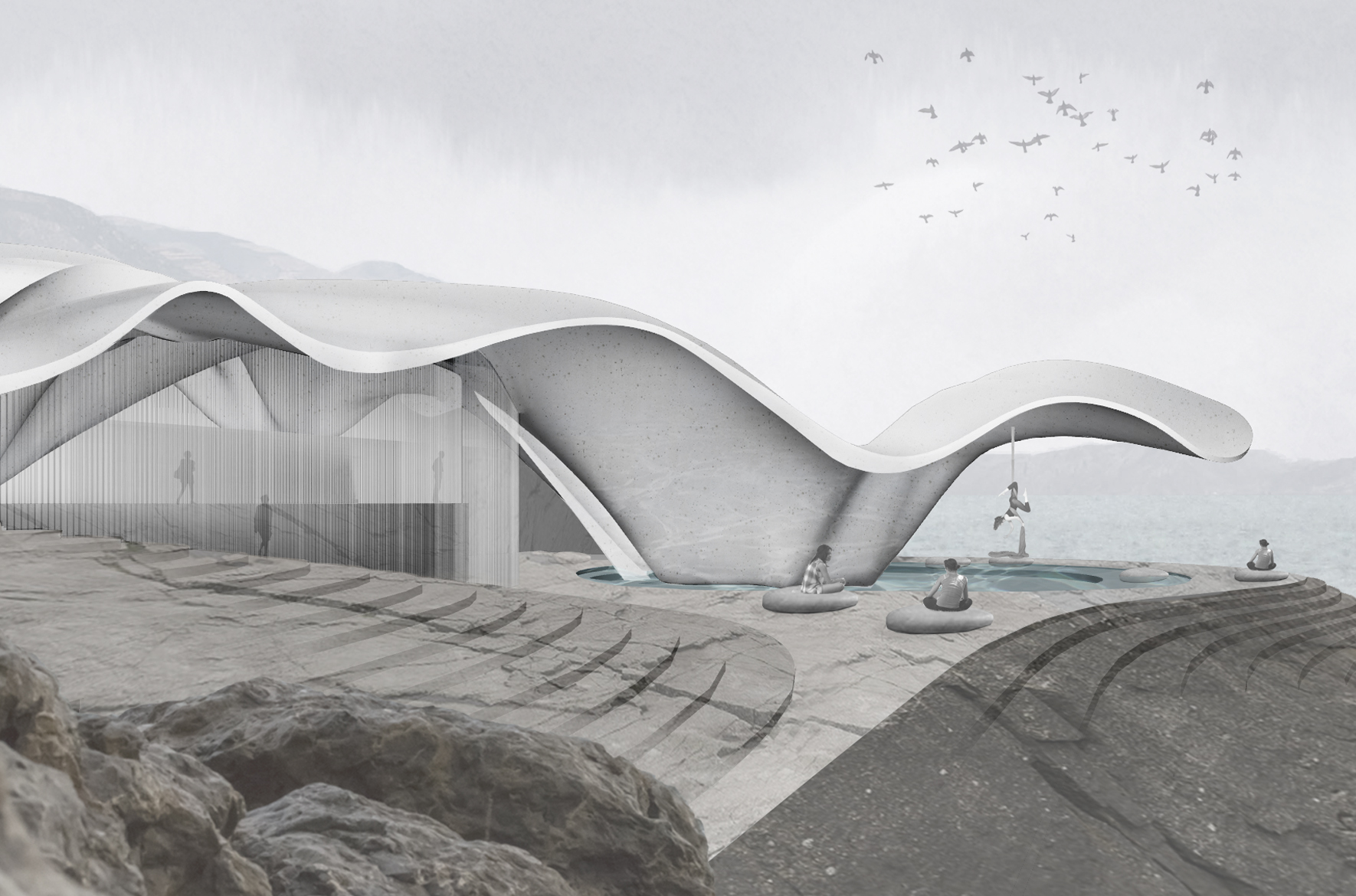
aerial silksa performance hall where the structure is derived not from a predefined program or site, but instead from investigations into material behavior
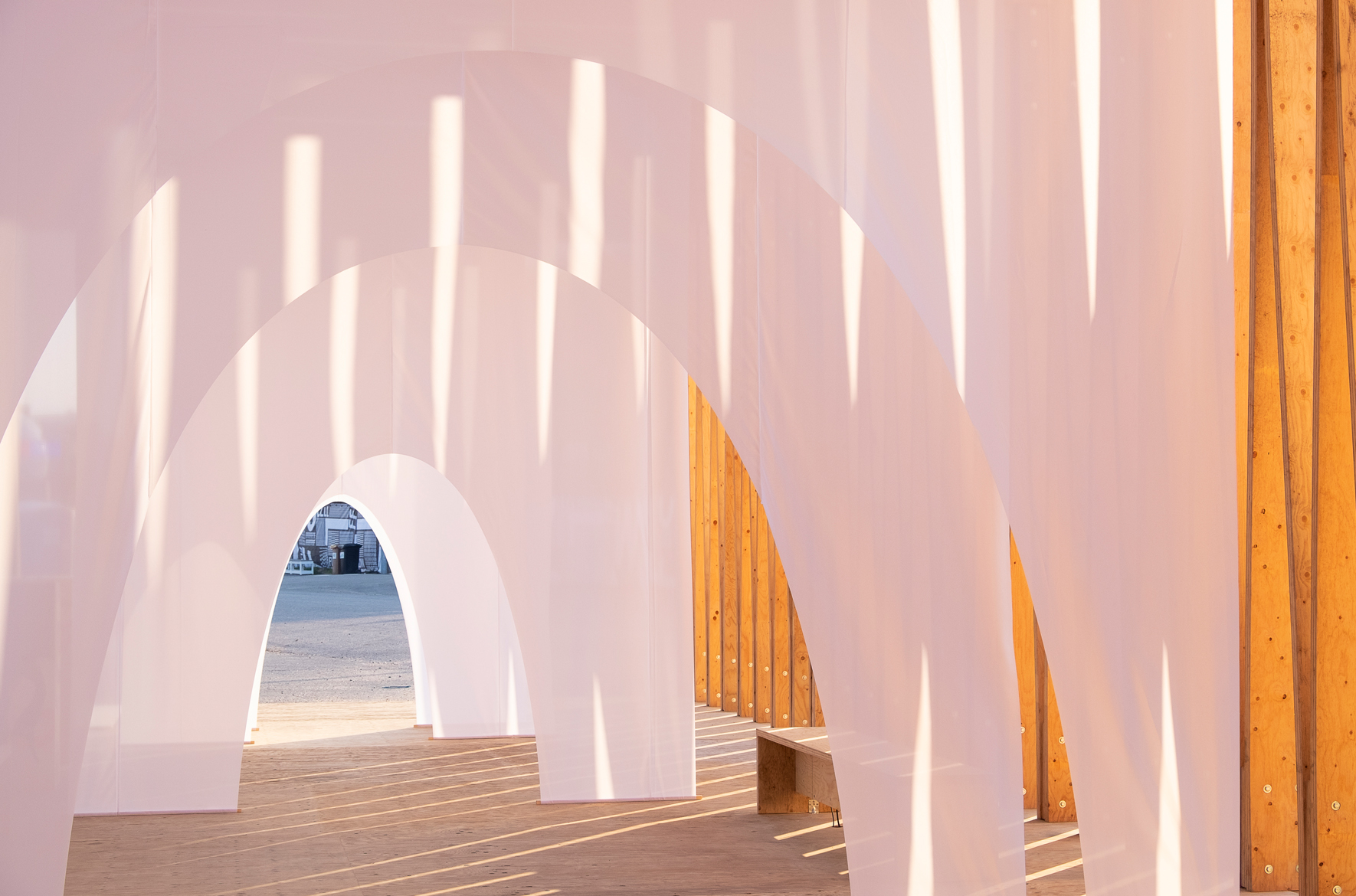
liminalan atmospheric spatial installation designed and built for Flow, one of the largest music festivals in the Nordics that brings together 85,000+ people
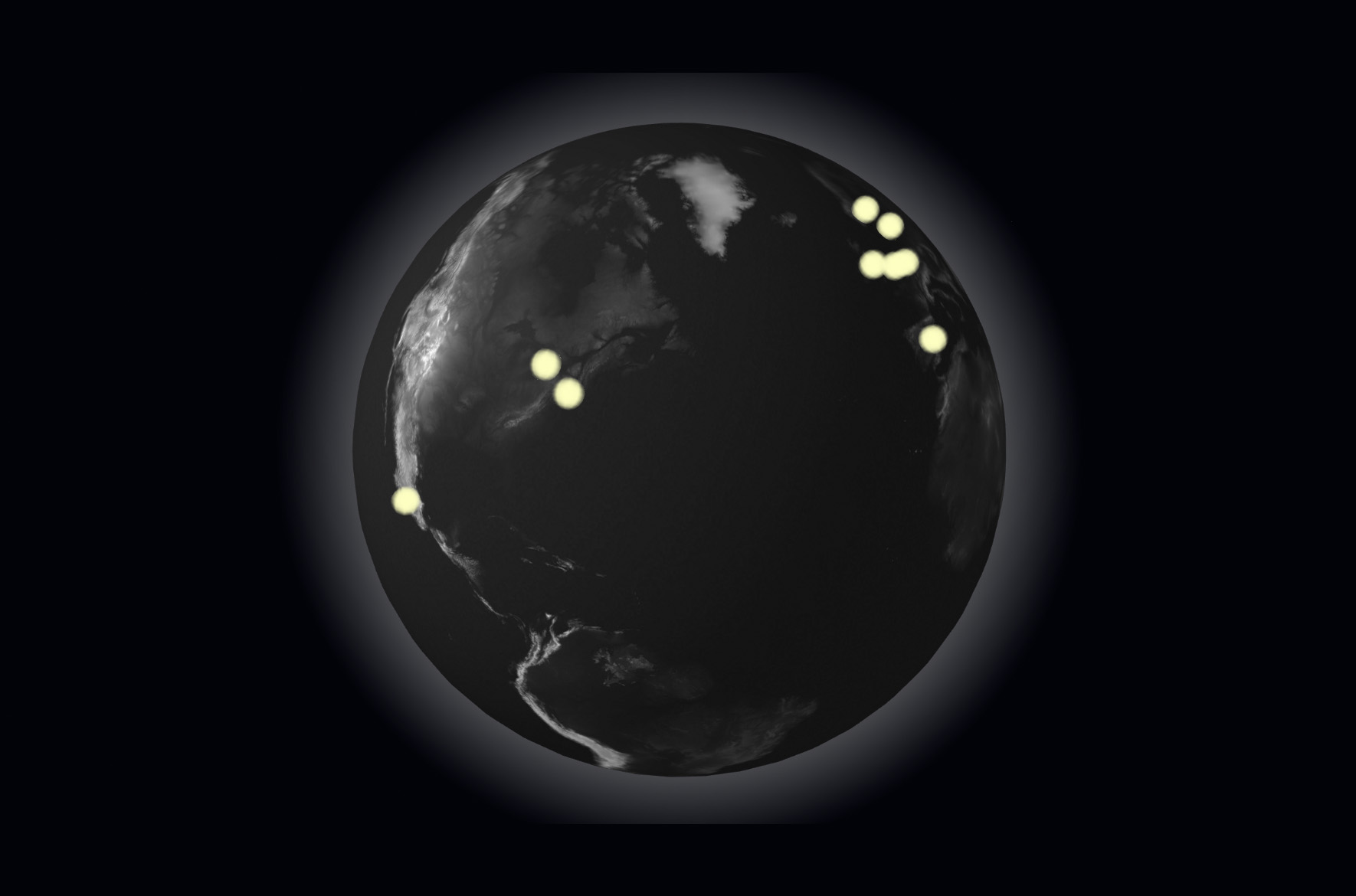
geo bubblesa dynamic visualization that speaks to the idea of nation- or region-wide filter bubbles, a phenomenon that brings social media filters to new scale
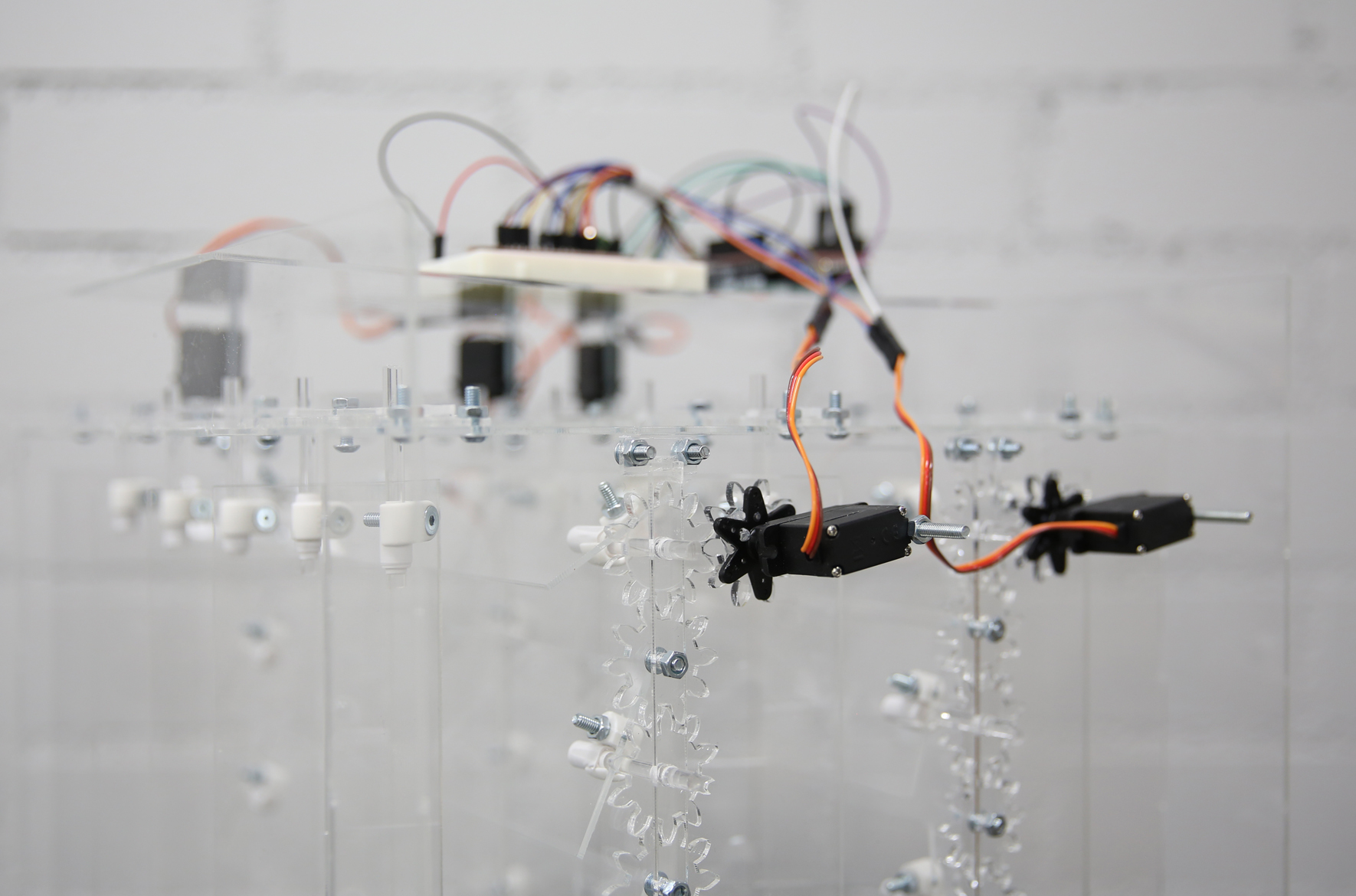
gestural compositionsan interactive installation prototype that explores how pattern generation, a conventionally two-dimensional process, could be applied three-dimensionally in space